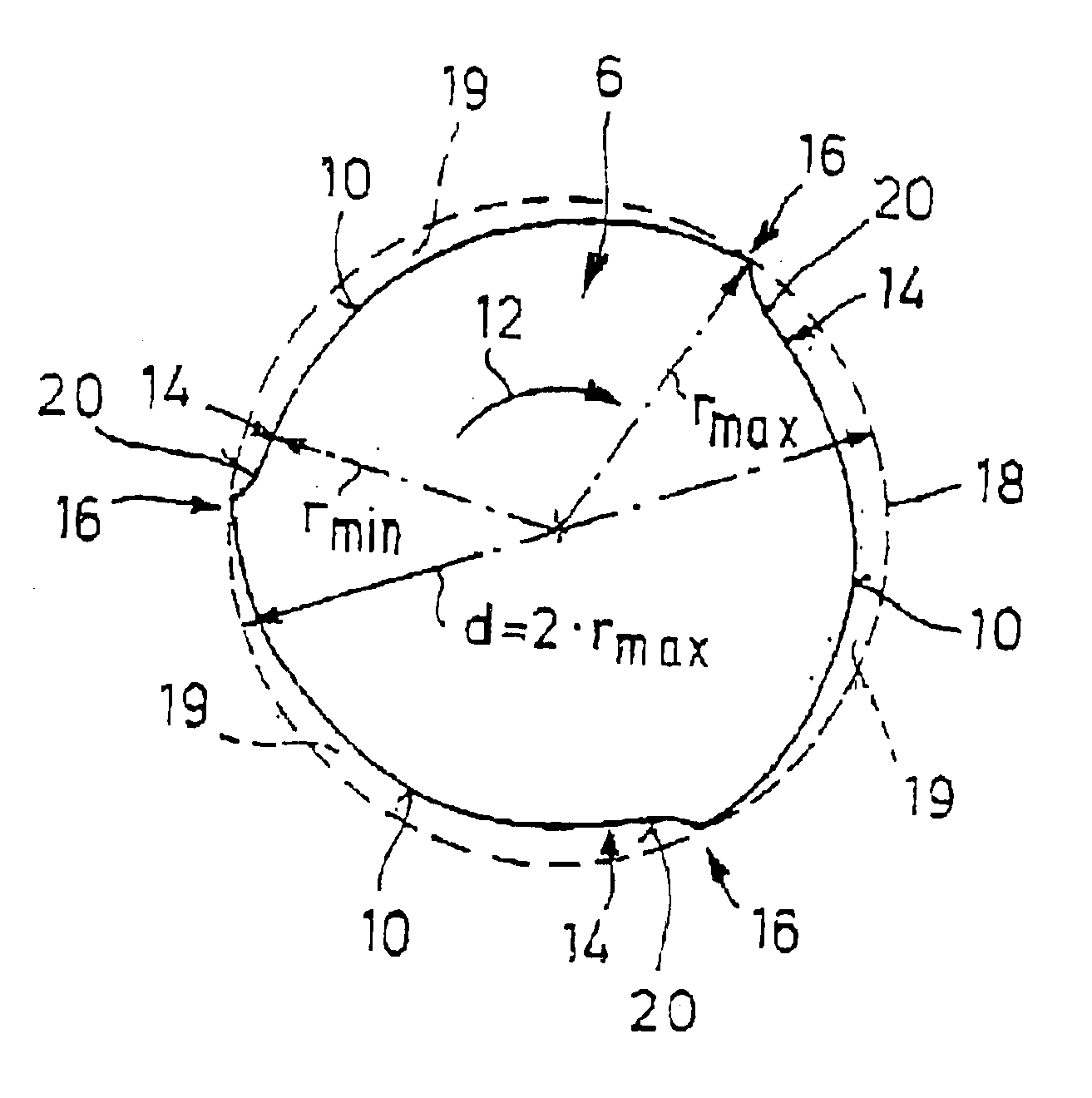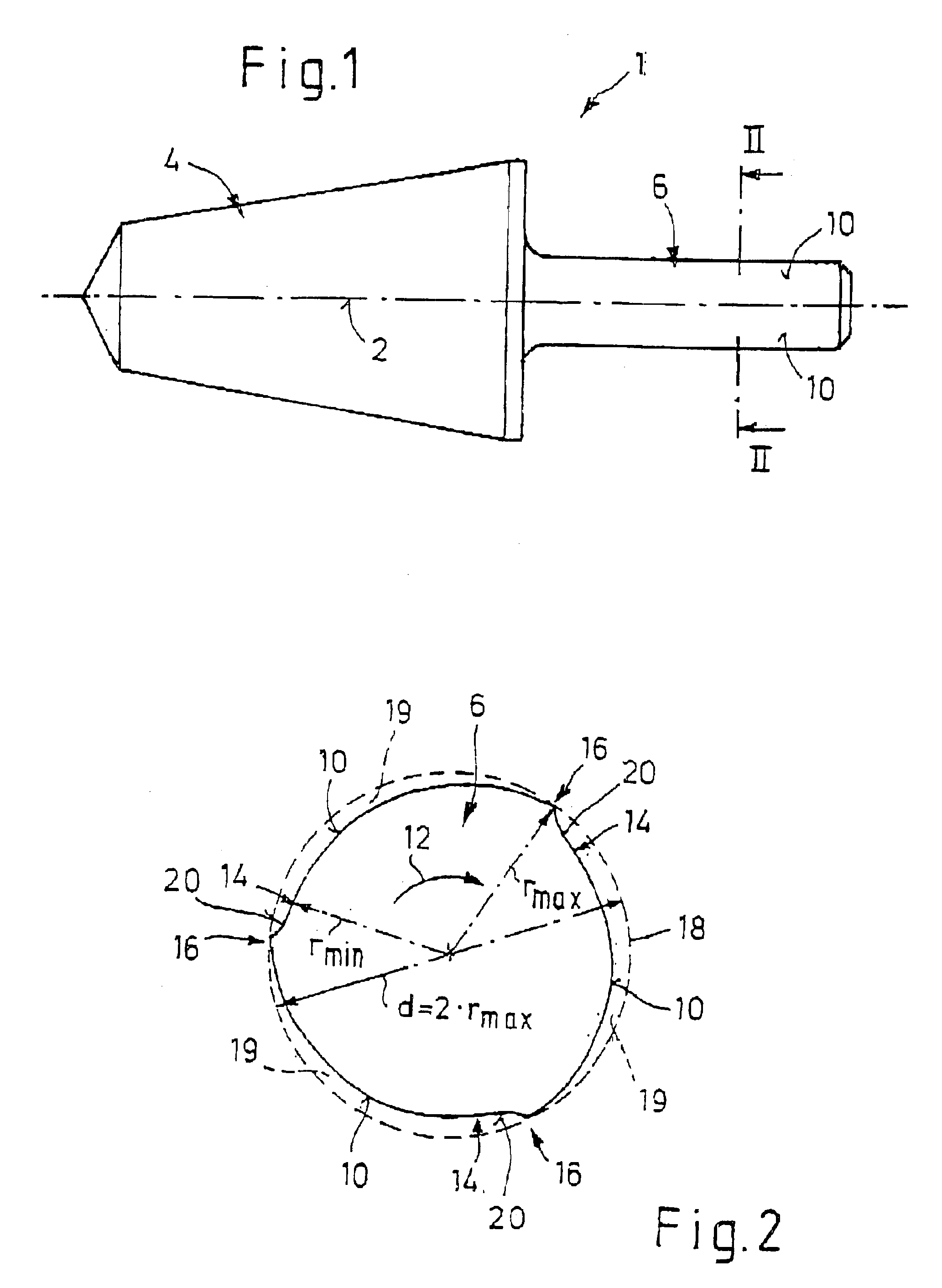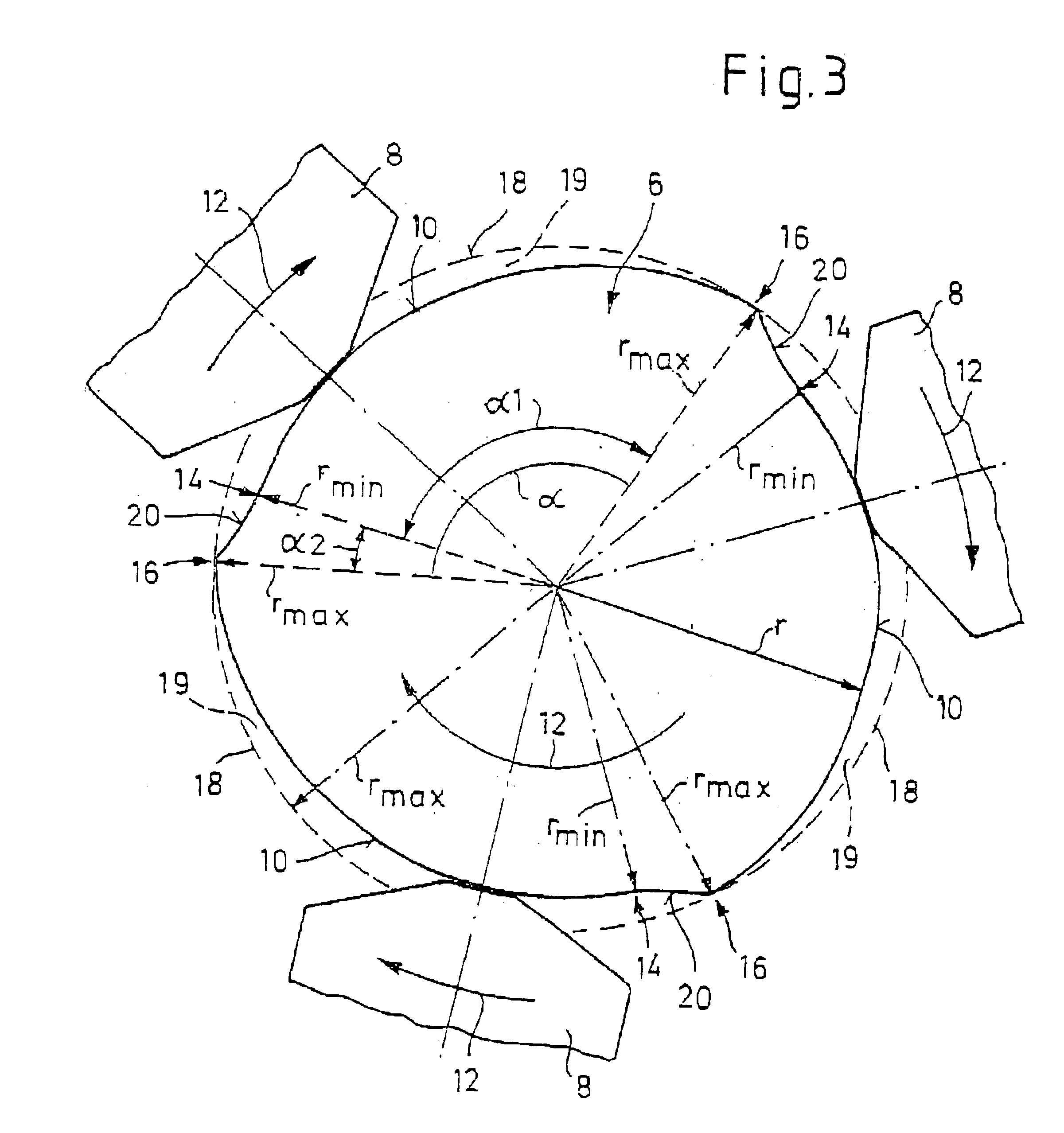Rotating tool with a clamping shank
- Summary
- Abstract
- Description
- Claims
- Application Information
AI Technical Summary
Benefits of technology
Problems solved by technology
Method used
Image
Examples
Embodiment Construction
[0014]FIG. 1 illustrates by way of example a tool 1 which consists of a working part 4 to be driven in rotation about an axis of rotation 2 and of an axially adjoining clamping shank 6. The working part 4 is designed, in particular, for cutting machining, for example as a drill, milling cutter, countersink, deburrer or the like. FIG. 1 illustrates by way of example an essentially conical version as what may be referred to as a boring drill, but it may also be, for example, a step drill or any other type of tool. The clamping shank 6 is inserted, for rotational drive, into a clamping chuck of a drive machine which is not illustrated. Depending on the number n of clamping jaws 8 (see FIG. 3) of the respective clamping chuck, the clamping shank 6 has a corresponding number n of clamping surfaces 10 for supporting one of the clamping jaws 8 in each case. Reference is made, in this respect, to the sectional illustrations in FIGS. 2 and 3.
[0015]As may also be gathered from FIGS. 2 and 3, ...
PUM
| Property | Measurement | Unit |
|---|---|---|
| Fraction | aaaaa | aaaaa |
| Fraction | aaaaa | aaaaa |
| Fraction | aaaaa | aaaaa |
Abstract
Description
Claims
Application Information
 Login to View More
Login to View More - R&D
- Intellectual Property
- Life Sciences
- Materials
- Tech Scout
- Unparalleled Data Quality
- Higher Quality Content
- 60% Fewer Hallucinations
Browse by: Latest US Patents, China's latest patents, Technical Efficacy Thesaurus, Application Domain, Technology Topic, Popular Technical Reports.
© 2025 PatSnap. All rights reserved.Legal|Privacy policy|Modern Slavery Act Transparency Statement|Sitemap|About US| Contact US: help@patsnap.com



